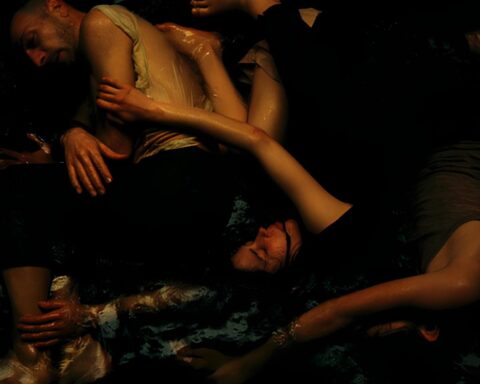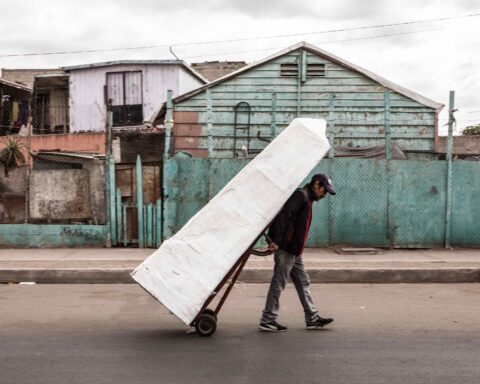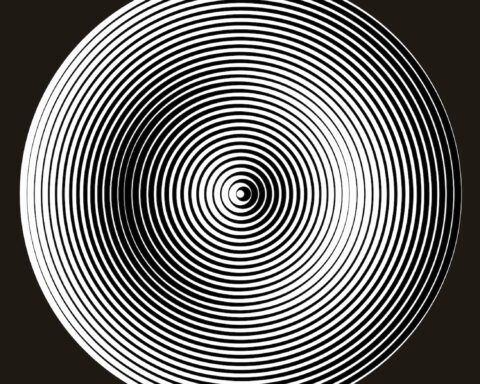“Breathing is nothing more than our photosynthesis”, says the artist Matteo Vettorello (Venice, 1986). A claim that reveals a lot about the poetry of the artist, that moves through opposite issues such as science, technology, art and human sciences.
Daily gestures and feelings are at the centre of Vettorello’s research, that – after a past as a painter, studying at the Academy of Fine Arts and IUAV University in Venice – consists of the creation of sculpture-devices able to measure and test our reactions and perceptions between each other, potential biometric systems attempting to measure something that cannot be measured yet. When they’re activated by the human interaction, become the medium through which two people interact with each other. It’s in this encounter that different factors come up: these sculpture machines are able to activate different interpretations of your capacity to leave, stay and be in the world through our senses. But the participatory installations created by the artist are devices that exist also by their own, as sculptures in the public space.
In the interview we talk about the relationship between the project, the artwork and the possibility of relations that have come out since the last two years of artistic practice, through the ideation of devices created to be activated by more than one people, going deeper in the editorial and designing items of his sketches and drawings.
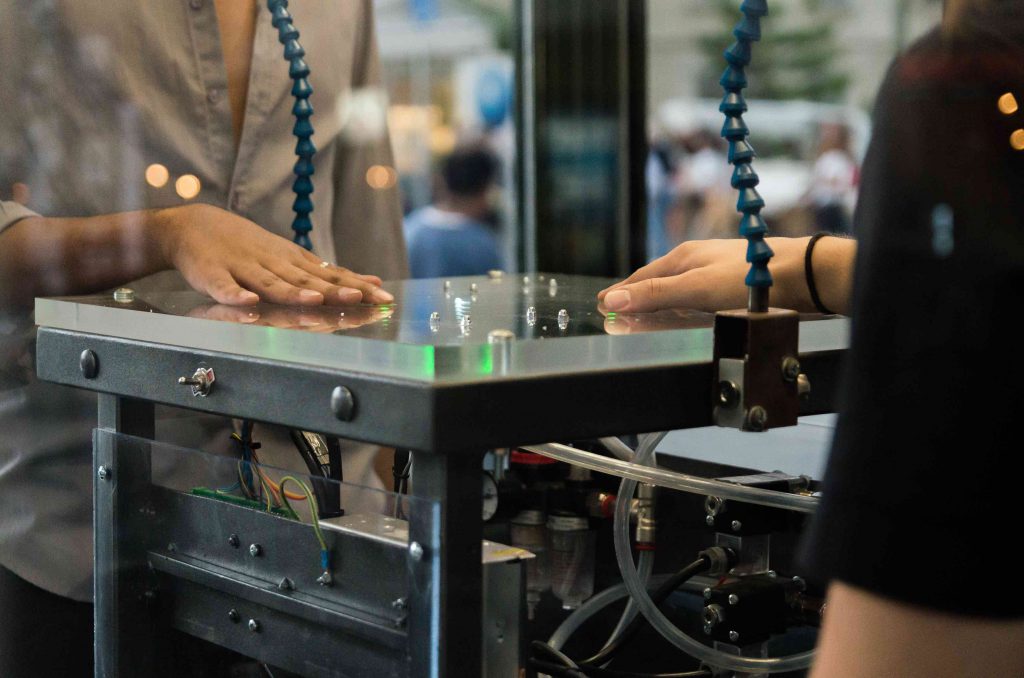
Sculpture device. Photo Maurangelo Quagliarella
Irene Sofia Comi: Hi Matteo, I’m happy to start this conversation with you, so first of all, thank you. I’ve been following your work for some time now, the things I would like to focus on are many. To focus on the direction your research is going, I would like to deepen the path you have followed in the last two years, analyzing three works in particular. Let’s start with the last one: Sintonizzatore di decongestione ambientale (“Environmental decongestion tuner”). What does it consist of? In what context was this project born?
Matteo Vettorello: Hi Irene, how are you? Everything’s fine here at my office. Thank you for your attention. Below I try to answer your very precise questions. Sintonizzatore di decongestione ambientale (“Environmental decongestion tuner”) is a process based on involvement, is an emotional ritual about awareness and is also a meeting point in the city. The idea becomes reality through the exaggerated reconstruction and the use of an instrument linked to the propitiatory rites of rain. This instrument is interactive: two users can operate the oscillating mechanism using two microphone systems. The ongoing oscillation depends on the constant breathing and on the same decibel of vocal emission.

ISC: With this work you focus on an urgency linked to the environment and its preservation. The meaning of the work, however, goes beyond, assuming a universal value. In fact, through your work you ask the public, that is to say passers-by, to become aware of pollution and climate change. At the same time, thanks to the collaboration of two people united in an action to achieve the same goal together, the device you made takes on an almost apotropaic value: it is aimed at those and what surrounds us, invites us to take care of us and of nature. In this work, as in the others you realise, your desire in a certain sense is to transform the attitudes that make us more human into social norms – such as our sensitivity and attention to others. Where does this urgency come from?
MV: Care for the other means awareness of the world – and breathing is nothing more than our photosynthesis. This work comes from the urgent need to shout how cooperation – which is an innate ability of humans – is perhaps the only way of conservation. It is dynamic, inclusive and not exclusive. The idea comes from the desire to do things that unite, rather than separate, therefore the measurement of the present. What is the present if not a blink of an eye that needs to be perceived? If we reverse our thinking, we realize that we do not perceive the process, but it is the process that tries to be perceived by us. And what if the process had its own breath?
ISC: This project can be read through different interpretative keys. One of these is the need to tune in with the other, an aspect that is also present in one of the previous works: Auto-indicatore di pressione simpatica (“Self-indicator of sympathetic pressure”), an interactive sculpture created in 2019 at Edicola Radetzky, a non-profit space on Milan Darsena, a few meters from Piazza XXV Aprile. Can you tell me what it consisted of? What do the two works have in common?
MV: Auto-indicatore di pressione simpatica (“Self-indicator of sympathetic pressure”) deconstructs the function of a measuring instrument. Making obsolete the numerical value given by the resultant is the critical aspect of this work that is a paradoxical synthesis of the behavioural habits of the contemporary human being. Neuroscientific aspects, such as the activation of certain neurons that regulate our emotions, can be measured with a conceptually different view by the systematic research of interrelationships as complex systems difficult to reduce to fixed parts. Auto-indicatore di pressione simpatica provides you with a hypothetical measurement in which the two parts, i.e. the two users who operate the pneumatic system, have the possibility to examine the quality of their empathy. Despite the complexity, this exercise has very precise rules. To perform it correctly the users must pay mutual attention and mutually regulate the heartbeat by breathing. In this systematic complexity that surrounds us, empathy between people, is linked to empathy towards the Earth and therefore the world. What makes these two works similar is that they can only be activated through close collaboration. The aim of these experiments is to try to create connections and involvement.

ISC: This is a path that identifies its starting point in Trasformatore di rapporti utili (“Transformer of useful ties”), a sculpture you made in Viafarini spaces, during your art residency period. This is the first sculpture in which you reflected on a dimension that we could call a “shared ritual”. Would you like to tell me better? What has changed in your research after and with this project?
MV: Trasformatore di rapporti utili (“Transformer of useful ties”) is a site-specific interactive installation.It consists of a sound sensor that adjusts the brightness of the light in an adjacent environment depending on the intensity of the emitted signal. The device becomes a consideration on the need, intensity and quality of the relationship between the parts. During the open studio of VIR Viafarini-in-Residence the bathroom service light was replaced by a small light bulb that could only be operated through voice, which was to be emitted in front of a microphone in the adjacent exhibition hall. The bathroom – a service environment that everyone may equally need – requires interaction in order to be used. The more intense and lasting is the sound emitted in front of the microphone, the longer the light bulb stays on. This was the first project in which the instrument became the means of connection between the parts, as if it were a regulator of needs.
ISC: Machines and software’s automatisms are increasingly integrated into our daily life. You use these elements to make your biometric devices. It is an art that in some ways leads to mechanics and information technology (you collaborate also with a team of engineers to create your installations). Why did you decide to combine mechanics with poetics? What do you want to communicate, using technology?
MV: Combining electromechanics and poetics – two apparently opposite fields – is a way of emphasizing complexity. The attempt is to depict the paradoxical course of a short circuit. This allows me to portray the world and the way we live. Technology is nothing more than the reflection of our contemporaneity.
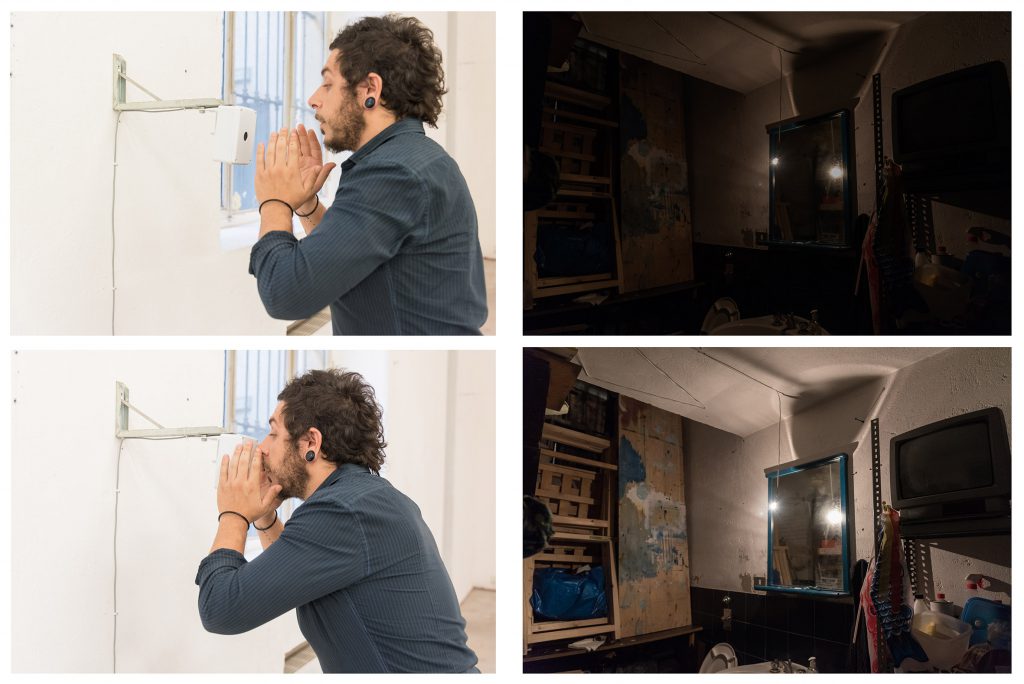
ISC: Today we live a complex time, where the social distancing seems to have become a conditio sine qua non. Considering this, what do the urban environment and the city need, in your opinion? In which way the art can and have to “run into” everyday reality? In the frenetic society of hyperconsumption, is there a “sustainable” model for humans?
MV: Society has the urgent need to become aware. Social distancing will not last forever, so the risk is to forget what happened and why. As I previously said, the attempt is to do things that unite rather than separate. Basically, my installations are an attempt to raise awareness about openness towards the other and what surrounds us. Art cannot be just a stumbling block (“Hey, look! A sculpture! And yet it moves…”) and can no longer be just a piece of furniture. What is certain is that we need to rethink the meaning of creating and its purpose. Only time will show us how to do it. I love Milan in the summer months. You can ride your bike without the constant risk of being run over. A sustainable model could be the removal of the horn from cars – speed does not mean quality. I dream of a world without cars!
ISC: Your poetics are very oriented towards participation, in terms of relationship between individuals and the public space. References to public art and comparisons with relational aesthetics are inevitable. How do you relate to these major issues?
MV: Bold claim: the installation in public is the new pop. I don’t develop my ideas trying to fit into big themes. I try to understand how the signifier becomes the signified itself. I work on my ideas trying to get them out into the world. My instruments exist even without activation and, at the same time, they are the means through which people relate. In order to unleash the meaning, the process needs the human being, who is the necessary link in the chain, and this allows further interpretations. The public place means passing, and, in this case, the installation and its possible fruition become an interesting social experiment. I’ve been reading up on the research about the development of devices able to process feedbacks of use. This is the case of a project I am currently working on: Rilevatore di benessere del vicinato per l’ottimizzazione della tranquillità di un condominio (“Neighborhood wellness detector for the optimization of the peace in a condominium”) or R.B.V.O.T.C. (02), which is a device that can record the number of uses and process qualitative viewable feedbacks.
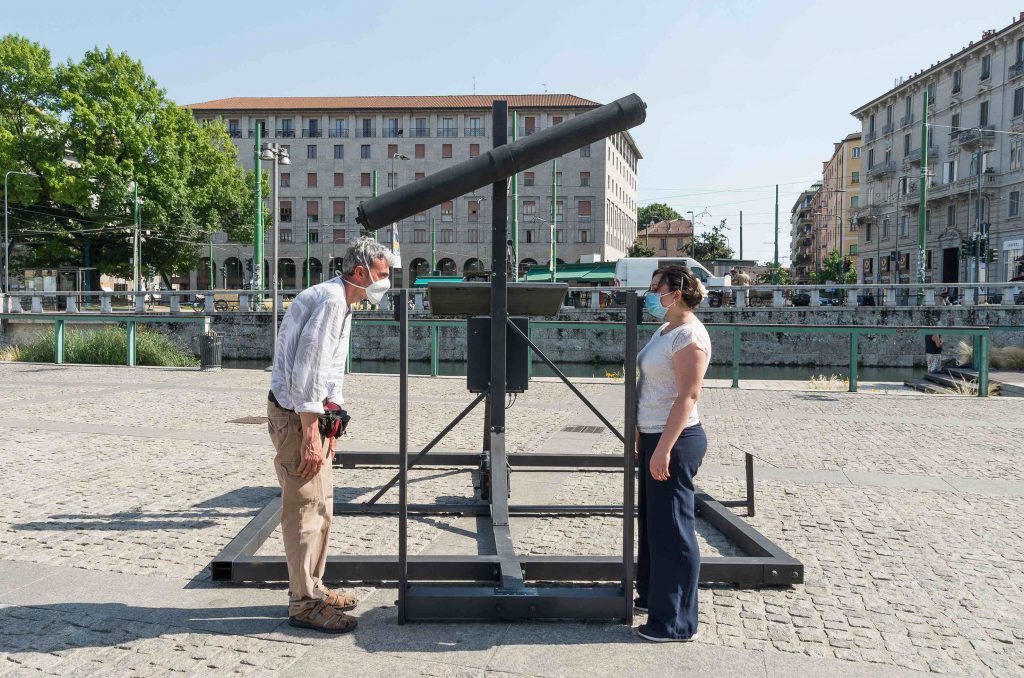
ISC: Finally, I noticed how your research materializes in opposite poles: on the one hand the public and participatory dimension we have just talked about; on the other hand, attention to detail, to drawing and to the small format on paper, on which you create the sketches for each of your creations. Through these ideas transcribed on paper, it is possible to understand the evolution of your projects. Is it a research aspect you are interested in pursuing? It seems to me that it is gaining more and more autonomy along your visual path …
MV: First and foremost, on paper. Paper is essential, since it regulates processes, fixes concepts and allows an abstraction that otherwise would be totally impossible – I would say self-defeating if directly made of material. If the drawing works, the device works too. I began making my projects speak first. They have become the means to communicate the idea. My drawings are the trigger of intuitive processes that become possible designs – this is the creative action.
The installation Sintonizzatore di decongestione ambientale (Environmental decongestion tuner) was created as part of the “Life Beyond Plastic” project – youth mobilization and implementation of good practices to reduce plastic pollution in the seas promoted by Istituto Oikos, thanks to the support of the Italian Agency for Development cooperation.

Matteo Vettorello, Sintonizzatore di decongestione ambientale (Environmental decongestion tuner), 2020. Project for the sculpture device



